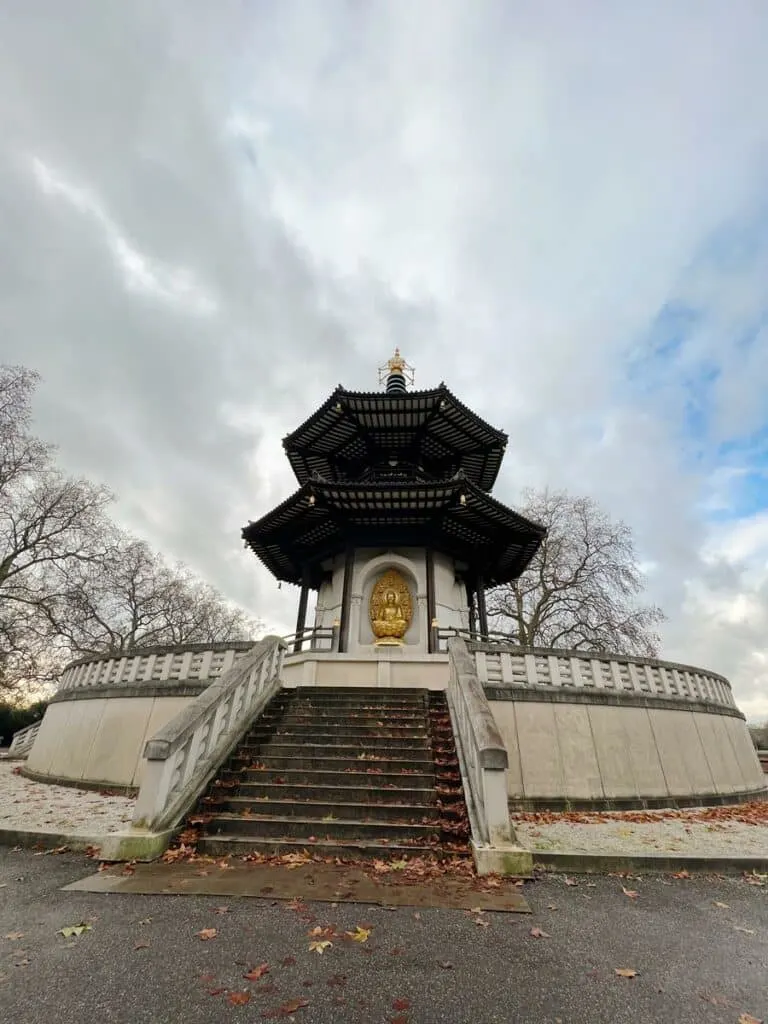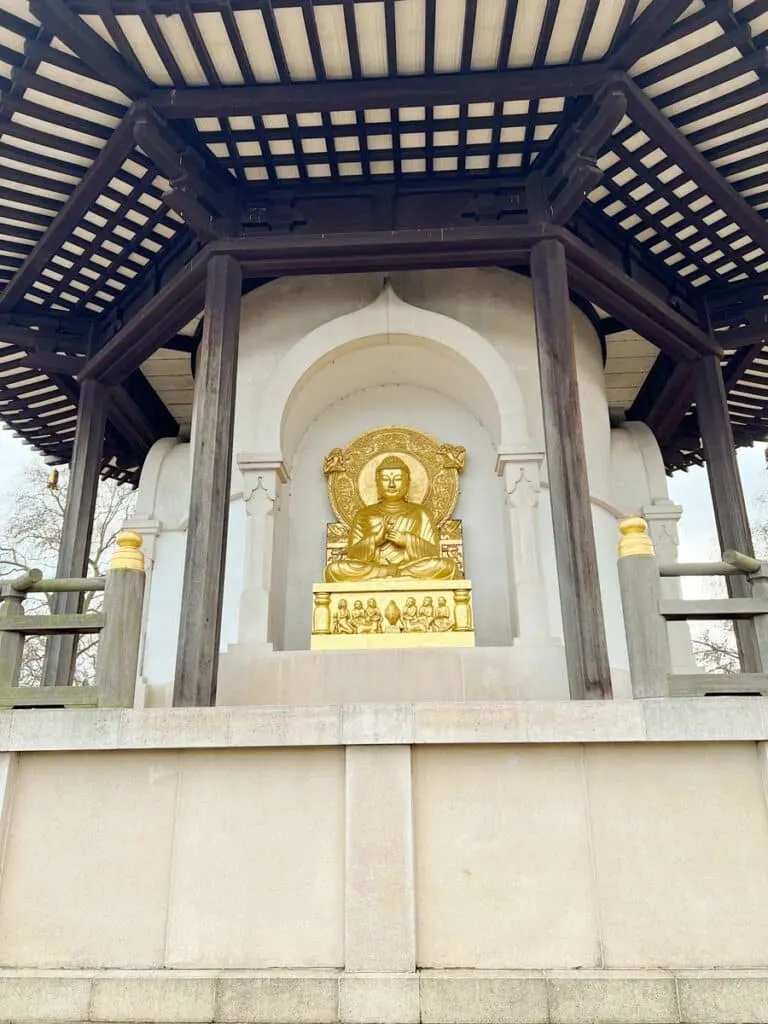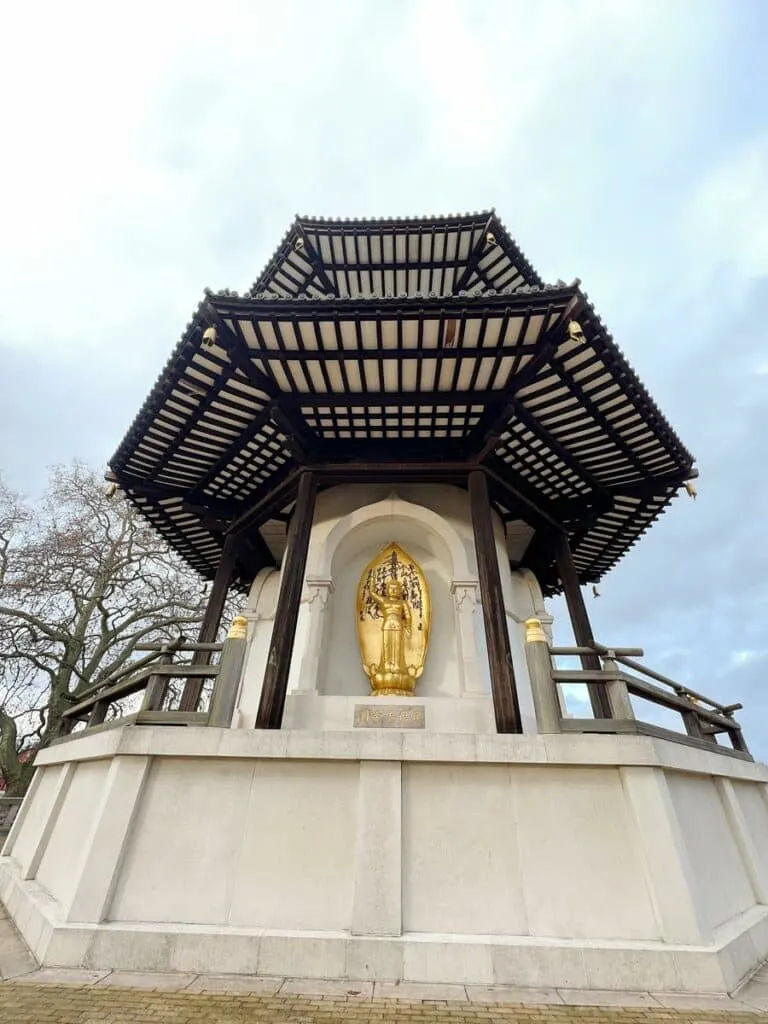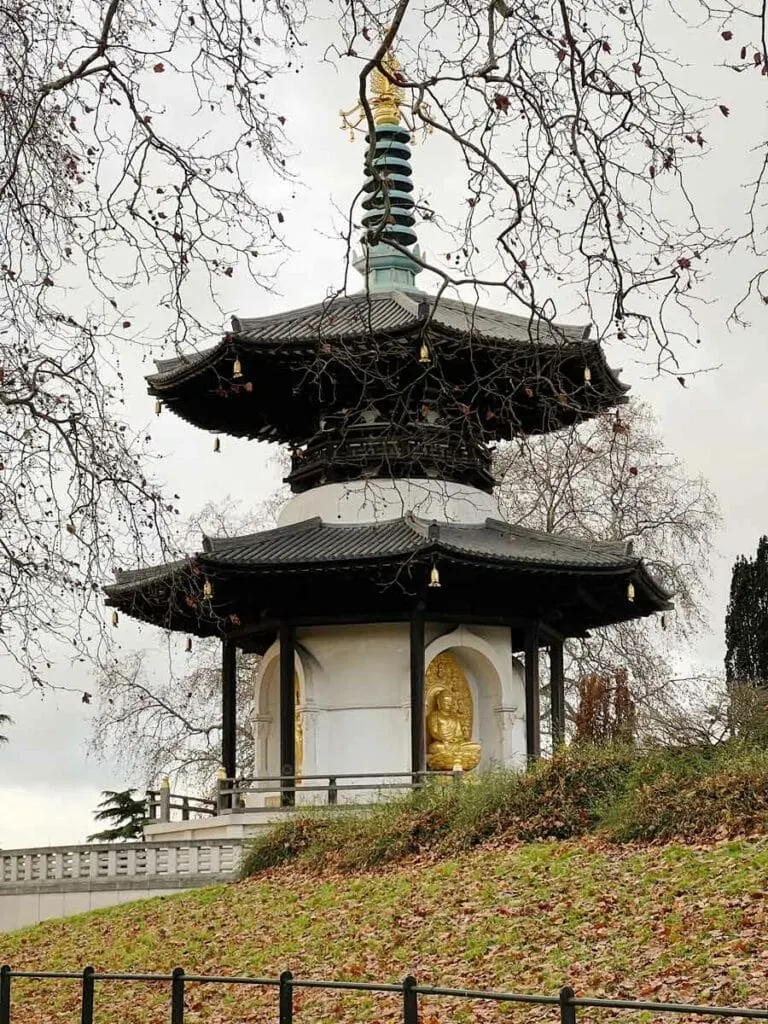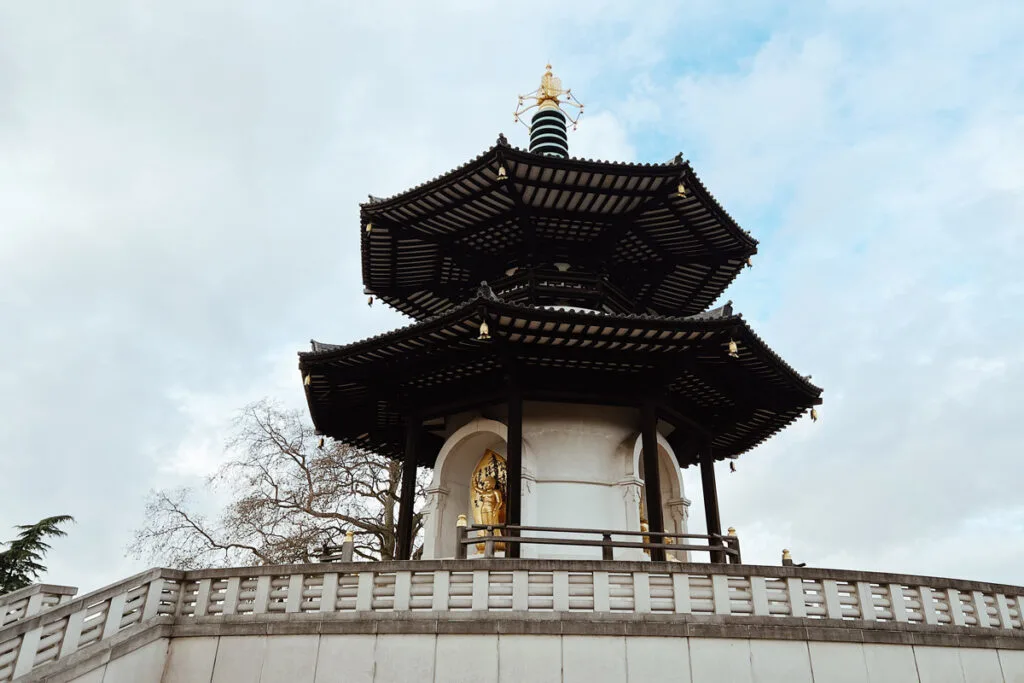London is exceptionally multicultural – even influences from places as far off as Japan can be found in our city. Enter: the Battersea Peace Pagoda.
Words by Sam Jeans
There’s no shortage of green spaces in London, but with its tranquil Thameside setting, Battersea Park is arguably one of the most beautiful.
Like other London parks, Battersea Park has a few hidden treasures. Head down Carriage Drive on the north side of the park, and you’ll stumble upon a rather beautiful example of traditional Japanese Buddhist architecture.
The Japanese Peace Pagoda, built in 1984, was gifted to the city by the Nipponzan-Myōhōji order of Japanese Buddhism. With its rich history and enduring message, there are more layers of intrigue to this wonderful pagoda than what meets the eye.
Why Visit the Battersea Peace Pagoda?
Locals, joggers, early morning commuters, and dog walkers might be accustomed to the otherwise incongruous sight of a Buddhist monk, clad in traditional dress, beating a drum at dawn beside an authentic Japanese pagoda at Battersea Park.
Who’s the monk, we hear you ask? That man is Reverend Gyoro Nagase, who came to London from Japan in 1978 to assist with the construction of the UK’s first Peace Pagoda. Built-in Milton Keynes, of all places (more on that later).
Reverend Gyoro Nagase has remained nearby ever since, and today, there are around 80 of these pagodas spread throughout the world.
The Peace Pagodas are the life’s work of Nichidatsu Fujii (August 6, 1885 – January 9, 1985), a Japanese monk that founded Nipponzan-Myōhōji in 1917.
The Peace Pagodas, while distinctly Buddhist in architecture and origin, are designed to promote peace across all religious, non-religious, cultural or ethnic groups.
Many people head to the pagoda to simply sit and contemplate, read a book, relax, people-watch, etc. Visiting the pagoda isn’t complicated, and anyone can participate, which is what the Nipponzan-Myōhōji intended.
In the words of Nagase himself, “It is a very spiritual place. It is peaceful, there is no confrontation. People don’t even need to pray, they just find peace here”.
The Peace Pagoda Has Excellent Views
Perhaps one of the main reasons you should visit Battersea Park is because there are some pretty stunning views across the Thames from the Peace Pagoda.
If you’ve not visited before, try to head down there on a misty morning when it’s quiet and the sun is first rising – you’ll be transported away from the stresses of day-to-day life.
The Pagoda Represents Buddhist Tradition
The pagoda features four bronze statues that depict Buddha throughout his life. They progress from birth through enlightenment, teaching, and death.
The pagoda features a plaque that describes each statue and what they represent in detail.
Events at the Peace Pagoda
The Peace Pagoda at Battersea Park hosts an annual celebration in mid-June and a commemoration with a floating lantern ceremony for Hiroshima and Nagasaki Day, which take place on August 6th and 9th, respectively.
You can find a full calendar of Nipponzan-Myōhōji events on their website.
The order regularly participates in peace-related events across the world. Reverend Nagase made the news in 2016 for protesting the construction of the new Wylfa Newydd power station in Wales.
Outdoor Tai Chi classes are held nearby, and Baji Zhandao Kung Fu classes are held just south of the Pagoda, though they’re not associated with the order.
The History of Battersea Park Peace Pagoda
The Battersea Park Peace Pagoda is a Buddhist stupa, a traditional form of Buddhist architecture.
Though it’s the only Peace Pagoda in London, there are over 80 of these structures built around the world, from Japan to India, South Korea, Germany, Italy, Latvia, and the US.
Each pagoda was gifted by the Nipponzan-Myōhōji, a peace-promoting branch of Japanese new Buddhism founded by The Most Venerable Nichidatsu Fujii (1885-1985), also known as Guruji, a nickname bestowed upon him by none other than Mahatma Gandhi.
Interestingly enough, the London Peace Pagoda has an older sibling elsewhere in the UK.
In fact, Milton Keynes saw the first Peace Pagoda in the entire western world, constructed in 1980. There is a Nipponzan-Myōhōji Order temple nearby, which remains the centre of Nipponzan-Myōhōji in the UK today.
Nichidatsu Fujii
‘Civilisation is not to kill human beings, not to destroy things, nor make war; civilisation is to hold mutual affection and to respect one another.’ – Nichidatsu Fujii.
Nichidatsu Fujii, the founder of Nipponzan-Myōhōji, was born in 1885 in the wilderness of the Aso caldera in southern Japan.
After spending his early life practising Buddhism and assisting others in charitable works, he met Mahatma Gandhi in 1933, who incorporated daimoku (a chant to the Lotus Sutra) into his prayers.
With his undying motive for promoting world peace, Fujii protested throughout the Pacific War in WWII and, after nuclear bombs were dropped on Hiroshima and Nagasaki in 1945, he embarked on his life’s work to advocate disarmament.
The Peace Pagodas provided a means of establishing Nipponzan Myōhōji’s message on the world stage, but Fujii remained an activist for most of his life, and the order frequently participated in anti-war protests throughout the Cold War.
Though Fujii passed away in 1985, the order continues to participate in peace activism.
Construction of the Pagoda
The first Peace Pagodas were aptly constructed in Hiroshima and Nagasaki, Japan. Fujii then returned to India and constructed the World Peace Pagoda in Rajgir in 1965.
In 1978, Reverend Gyoro Nagase from the order joined a team of 50 other volunteers to help construct the first western Peace Pagoda at Milton Keynes and then London in 1984.
Nagase remained on-site after the pagoda was completed, but the site remains London’s spiritual centre for the Nipponzan Myohoji Buddhist Order.
Milton Keynes was selected for a pagoda first, as one of the town planners managing the construction of the town visited Sri Lanka, where he saw a Peace Pagoda.
Upon return, he campaigned for a pagoda to be built in one of Milton Keynes’ parks. The town planning team and the Nipponzan Myohoji agreed.
Then, by coincidence, the wife of a local cameraman who filmed the commemoration of the pagoda gave birth in a hospital bed next to a woman who worked for Greater London Arts and Recreation Committee.
She was seeking ideas to commemorate the forthcoming London Peace Year. After viewing camera footage of the pagoda in Milton Keynes, she campaigned for one in London, and the rest is history.
Architectural Style and Design
Sure, the pagoda is pretty impressive – but what does the design mean? Allow us to, erm, enlighten you, friends.
The Peace Pagoda enshrines four statue relics of Lord Buddha.
Each of the four gilded bronze statues depicts a hand gesture, symbolising the progression of Buddha’s life through birth, enlightenment, and the first preaching of Dharma and Parinirvana (aka. nirvana).
The building itself is 33.5m high with a traditional double roof. While the lower tier of the building is open to the public, the upper tier is not, and the statues are sacred.
London Peace Pagoda: Practical Information
Address: Battersea Park, Carriage Dr N, London SW11 4NJ
Opening Times: 24 hours
Tickets: Free


